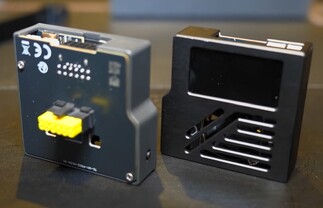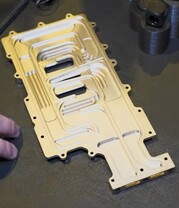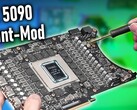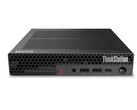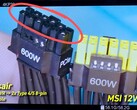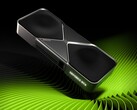Wire View Pro 2: Enhanced diagnostics for GPU power delivery
Wire View Pro 2 is the latest iteration of der8auer's in-line GPU power monitoring device. Originally inspired by Elmor's PMD and created to investigate issues around the 12VHPWR connector, the device now adds per-pin current sensing and onboard logging to further diagnose failures or preempt them through long-term data analysis.
The device sits between the GPU and the PSU and reads current, voltage, and temperature on each of the 12VHPWR pins. Sensors on both the connector and external surfaces (such as the backplate or system ambient temperature) are supported. The goal is to identify conditions like poor contact resistance or elevated heat long before failure occurs. However, der8auer is clear: the device cannot guarantee prevention of connector failure, but it can offer diagnostic insight after the fact.
The upgraded model adds onboard storage (up to 32 MB) capable of logging sensor data at configurable intervals (e.g., every five seconds). This enables roughly three months of system behavior tracking, aiding users in identifying creeping issues like increasing power draw or temperature anomalies. Looking at you, Nvidia—thanks for the inspiration. Who knew that turning power connectors into hotplates would spark a wave of innovation?
A small 30 mm fan aids in active cooling of the connector and PCB, dissipating up to 10 watts of thermal load. This is especially relevant in low-airflow systems such as those using water cooling. A fail-safe connector allows the device to automatically shut down the PC if it detects catastrophic issues.
While the release is targeted for late 2025, pricing is still to be finalized, with an estimate around 100 euros. Production delays are anticipated due to custom molding requirements for the elongated connectors, which are expensive to manufacture and source—tens of thousands in tooling costs alone, just to produce a connector that’s actually up to the task. We figured Nvidia would have the kind of money to get this right the first time. Apparently not. So here we are.
The Wire View Pro 2 is aimed at system integrators, diagnostics professionals, and high-end users concerned about the reliability of new high-power connectors. It is not a universal solution to connector failures, but a critical tool for forensic insight and preventative analysis.
Der8ench active bench table: A test platform built for convenience
The Der8ench table rethinks what a PC test bench can be. Designed originally for der8auer's own needs, the platform combines passive motherboard mounting with active data and power support features. Unlike traditional bench tables that simply hold hardware, Der8ench offers a semi-integrated USB hub, fan and pump controls, microSD slots, and SATA SSD mounting points—all on a PCB platform. It’s the hardware equivalent of an everything bagel with cheese—stacked with features, unapologetically overloaded, and somehow still practical. Yum.
The unit connects directly to a motherboard USB header and supplies four USB 2.0 ports (two on each side). It also supports up to four microSD cards, ideal for storing OS images, drivers, or benchmark tools. SATA SSDs can be mounted directly to the bench for cheap, large-capacity local storage.
Three fan headers and a pump header provide controlled power delivery. Each can be set to 100%, 50%, or follow external input from the motherboard. Each zone is individually fused, and the table draws power from a 6-pin PCIe connector, making it compatible with standard desktop PSUs.
Two USB Type-C ports allow power delivery to external devices like thermometers or chargers. Probing points on the PCB allow for quick access to PSU lines for external power devices or monitoring.
For users constantly swapping components for testing, the convenience of consolidated I/O and storage outweighs traditional bench platforms' minimalism. It's clearly built for overclockers, system reviewers, and development labs where speed and repeatability matter more than aesthetics. No RGB here.
The full bundle, including aluminum supports and optional accessories, is expected to cost around 200 euros. Availability details were not finalized, but initial production will be handled in-house before potentially being outsourced.
Astral and CPU blocks: Premium liquid cooling with a focus on finish and flow
Thermal Grizzly's new GPU and CPU water blocks claims advanced machining and fluid design to target high-performance systems. The Astral GPU block for Nvidia's flagship RTX 5090 and the new CPU block both utilize dense microfin structures with 0.2 mm spacing, in a pursuit of allowing for highest surface area contact to achieve the optimal thermal transfer.
Each block apparently undergoes a complex multi-stage CNC process, including machining, glass-blasting, and precision finishing. This ensures a flawless mirror contact surface while preserving durability and consistent thermal conductivity. According to Joe Robey, Thermal Grizzly's lead engineer, each GPU block takes about two hours to manufacture due to the triple-flip machining and tight tolerances involved.
Key design focuses include reducing dead zones to prevent air accumulation, maintaining consistent coolant paths, and enhancing visual appeal with a clear, symmetrical coolant layout. The CPU block follows a similar aesthetic and engineering design, including a thick brass body for structural integrity and minimal parts count to reduce potential failure points.
Retail pricing for the GPU block is set at 500 euros, targeting high-end users seeking both performance and visual polish in custom loop builds. The CPU block details, including pricing, were not finalized at the time of reveal.
Conclusion: practical tools designed by users, for users
Der8auer and Thermal Grizzly claim they try to focus on solving practical problems for power users and system builders. Rather than chasing trends, they prioritize usability, durability, and thoughtful design based on hands-on experience.
If you're like me and sometimes find yourself tinkering with your system not because it needs fixing, but simply because it's fun—that quiet satisfaction of changing something just to see how it behaves—then the Der8auer bench might have that kind of mindset in mind.
Truly inspiring work, Nvidia—without your thermal disasters, half this product lineup wouldn’t exist.





